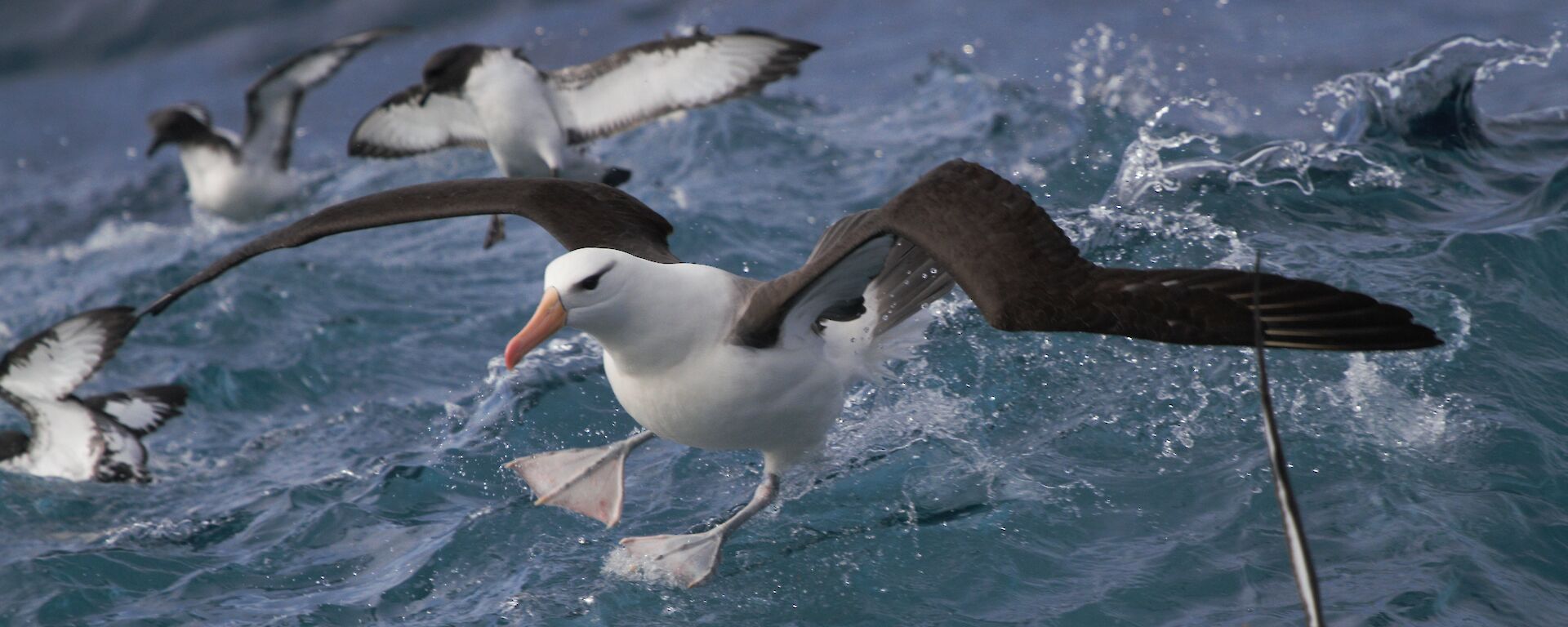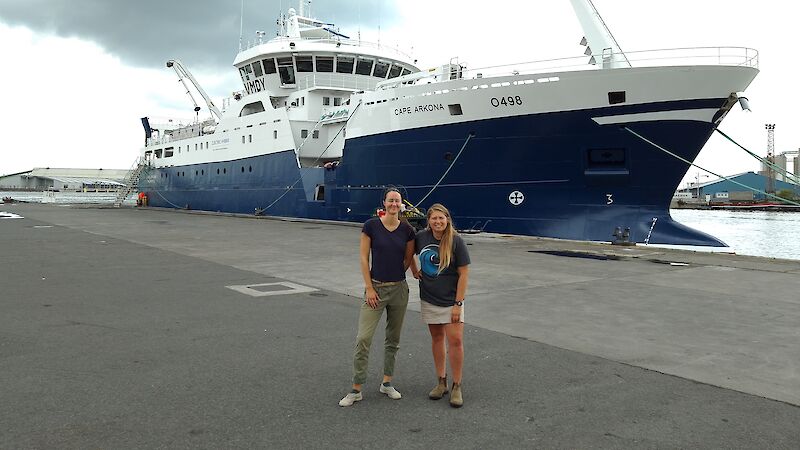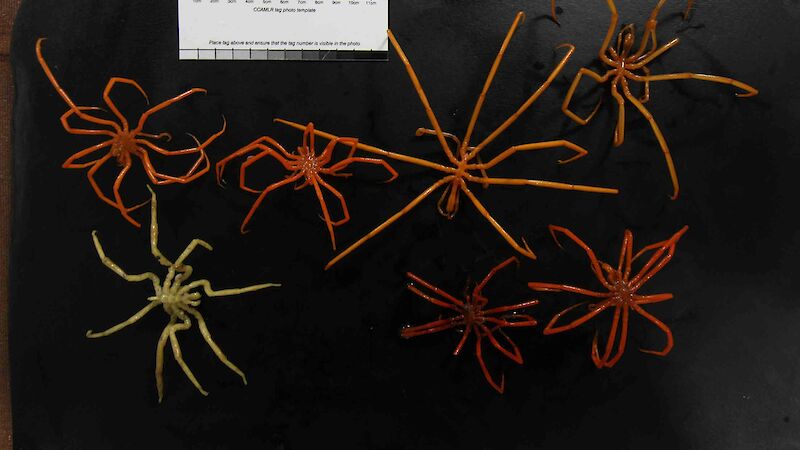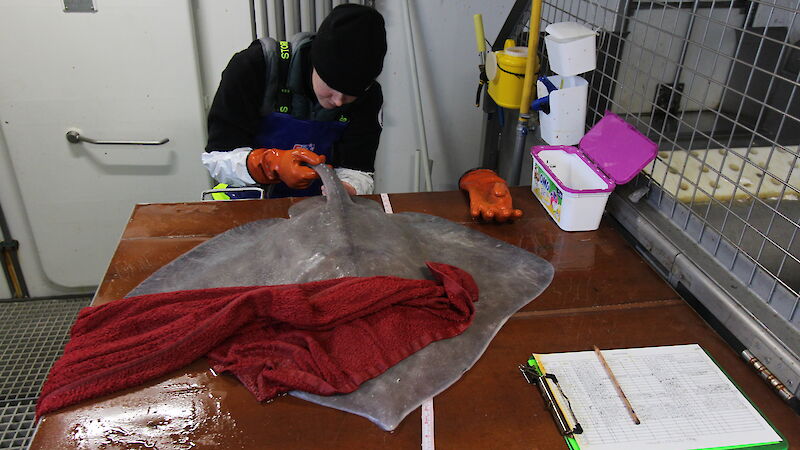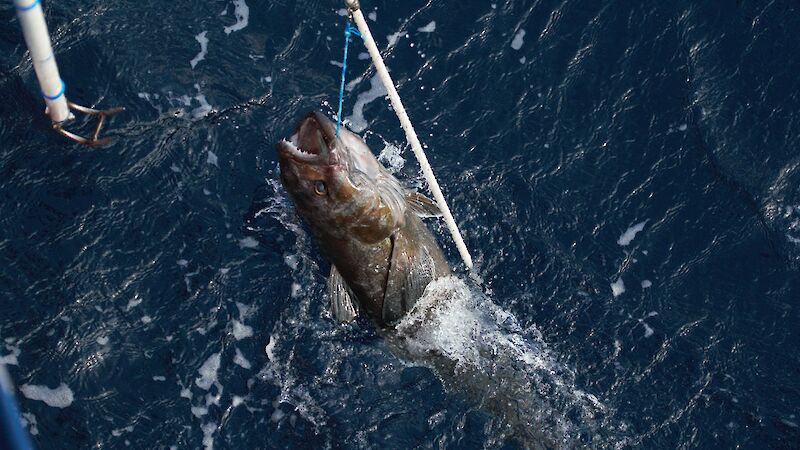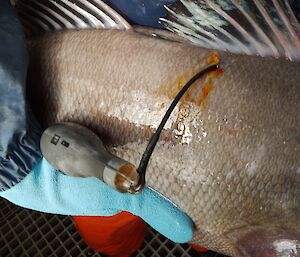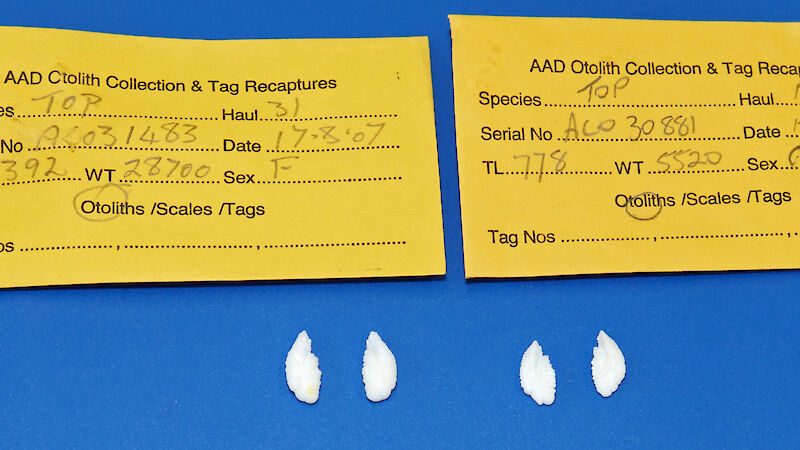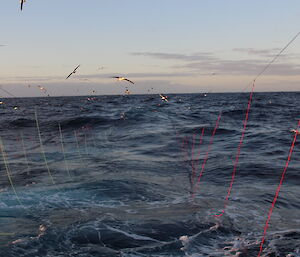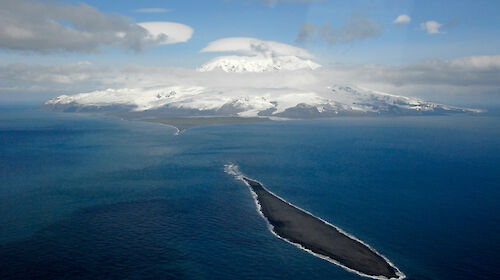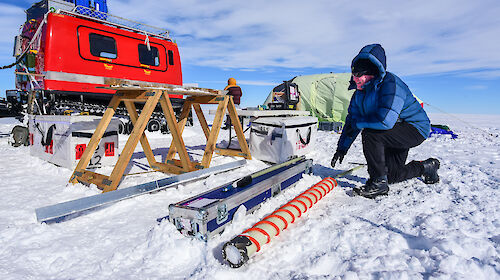The voyage was one of many AAD science-industry collaborations that have supported a sustainable toothfish and icefish fishing industry around HIMI since 1997.
“There are up to five fishing vessels operating around HIMI annually, which catch around 2500 tonnes of toothfish and 500 tonnes of icefish, worth about $100 million to the Australian fishing industry,” Dr Cleeland said.
“There have been independent scientific observers on board all vessels since the fishery started and annual research surveys collecting important data on patterns and trends in abundance of target and non-target species.
“This data allows scientists to assess the potential impacts of climate change and fisheries effort on these species.”
During the voyage the pair contributed to multiple research projects being conducted by AAD, IMAS and Securing Antarctica’s Environmental Future (SAEF), which will support sustainable fisheries management.
This included collecting a diversity of ‘benthic’ (seafloor) invertebrates, collecting earbones from Patagonian toothfish for ageing studies, and tagging toothfish and deep-sea skates.

